Where Can We Use LED Strip Lights in Our Home?
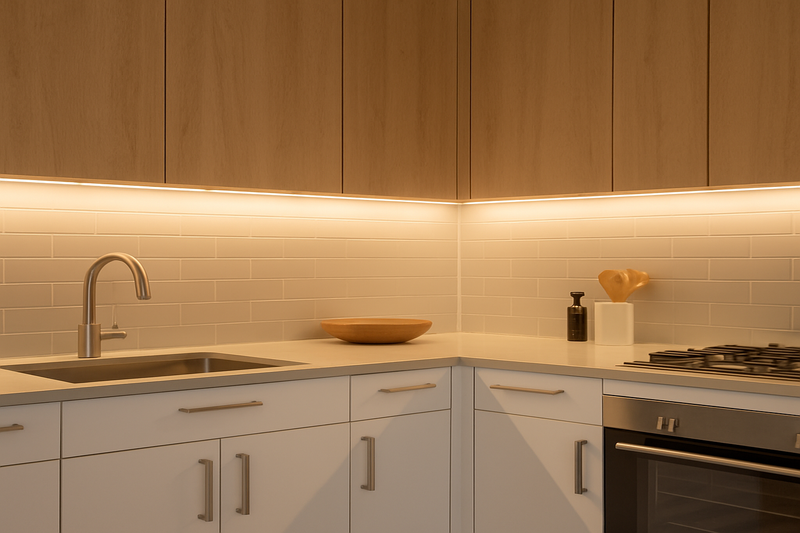
Your home’s lighting is functional, but it feels flat and uninspired. You see stunning, modern homes online and wonder how they achieve that warm, professional glow that makes every room feel special.
You can use LED strip lights almost anywhere to create layers of ambient, task, and accent lighting. The most popular places are under kitchen cabinets, in living room ceiling coves, along stairways and handrails, behind headboards in bedrooms, and around bathroom vanity mirrors.

As a manufacturer, I see my products used in incredibly creative ways. The secret to a high-end look isn’t just about having lights; it’s about placing them strategically to highlight architecture and create a mood. LED strips are the professional’s tool for this because they can be hidden, creating a magical effect where you see the light, not the fixture.
Where Are the Best Places to Put LED Strips in a House?
You have a roll of LED strip light, but you’re not sure where it will have the most impact. You want to add value and a "wow" factor, not just stick lights on a wall.
Focus on strategic locations in key rooms. In the kitchen, use them for under-cabinet task lighting. In the living room, install them in ceiling coves for soft, indirect light. In bedrooms, place them behind headboards or under the bed for a floating effect.

The best applications are almost always indirect, meaning the strip itself is hidden from view. The goal is to wash a surface with a smooth, even glow. I always advise designers and installers to think about how they can integrate the light into the structure of the room itself. This is the difference between simply adding lights and truly designing with light.
A Room-by-Room Idea Guide
Let’s break down the most effective uses for LED strips in the main areas of a home. The key is to match the application to the function of the room.
- ### Kitchen: This is the most popular area. Under-cabinet lighting is essential for task illumination on countertops. You can also add strips above cabinets for an upward glow, or along the toe-kick for a dramatic, floating effect.
- ### Living Room: Ceiling coves are the number one application here, providing beautiful ambient light1 that makes the entire room feel larger and more welcoming. Other great spots include behind a wall-mounted TV to reduce eye strain (bias lighting) or built into shelving to accent decor.
- ### Bedroom & Bathroom: In bedrooms, placing strips behind a headboard creates a stunning feature wall and a relaxing reading light. In bathrooms, framing a vanity mirror with strips provides shadow-free task lighting2 for grooming. Installing a waterproof strip under a floating vanity adds a touch of spa-like luxury.
| Location | Primary Use | Lighting Effect |
|---|---|---|
| Kitchen Cabinets | Task Lighting | Bright, clear light on work surfaces. |
| Ceiling Cove | Ambient Light | Soft, indirect glow to fill the room. |
| Behind TV/Headboard | Accent Light | Reduces eye strain, creates a focal point. |
| Bathroom Mirror | Task Lighting | Even, shadow-free light for your face. |
Should I Put LED Strips on the Wall or Ceiling?
You want to add light, and the wall or the ceiling seems like the obvious place. But you’re worried that a visible strip of lights will look cheap and create a harsh glare.
Neither. You should almost never place a bare LED strip directly on a flat wall or ceiling. Instead, mount the strip indirectly so the fixture is hidden and you only see its soft, reflected glow. Place it inside coves, behind ledges, or within aluminum channels.
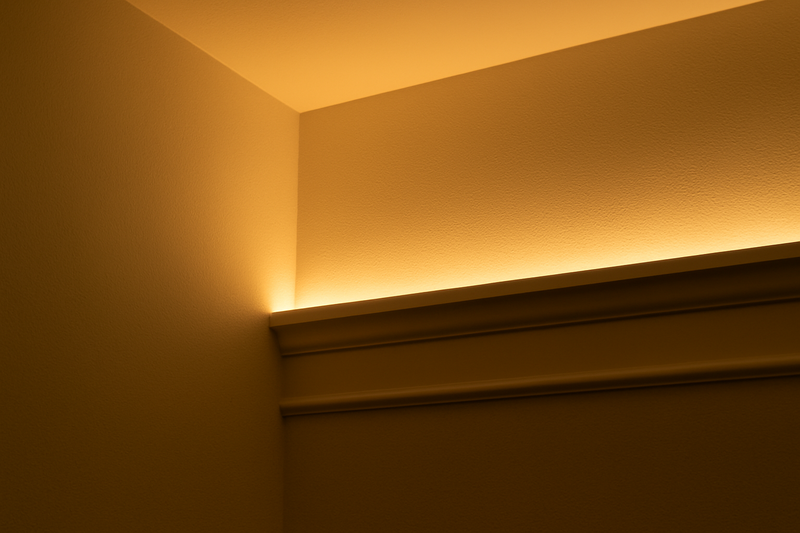
This is the most important rule for achieving a professional look. Exposed LED dots create glare and look like a dormitory room. The magic of strip lighting comes from hiding the source. Whether it’s on a wall or a ceiling, the principle is the same: the strip should illuminate a surface, and that surface should reflect the light back into the room. This creates a soft, luxurious ambiance that is free of harsh bright spots.
The Power of Indirect Lighting
The difference between a DIY project and a professional architectural installation is the understanding of direct versus indirect light.
- Direct Lighting3: This is when you can see the light source (the LED strip). This creates high contrast, sharp shadows, and uncomfortable glare. It’s distracting and looks unfinished. Placing a bare strip on the middle of a wall is direct lighting.
- Indirect Lighting4: This is when the light source is concealed. The light is bounced off a surface like a ceiling or a wall before it reaches your eyes. This diffuses the light, softens shadows, and eliminates glare, resulting in a comfortable and sophisticated atmosphere.
- How to Achieve It: Use natural architectural features. A ceiling cove, a dropped ceiling detail, the space above kitchen cabinets, or the back of a mirror are all perfect hiding spots. If no such feature exists, you can create one with a small piece of trim or by using a dedicated aluminum channel with a frosted diffuser.
| Lighting Method | Visual Effect | Professionalism |
|---|---|---|
| Direct (Exposed Strip) | Harsh glare, visible dots | Amateur |
| Indirect (Hidden Strip) | Soft, even, comfortable glow | Professional |
When Should You Not Use LED Lights?
You’re excited about the possibilities of LED strips, and you want to put them everywhere. But are there situations where they are the wrong choice for the job?
Yes. You should not use LED strips as the only source of light in a room. You should also avoid using them in places with extreme heat (like a sauna) without proper heat sinking, or where the individual LED dots will be directly visible and create glare.
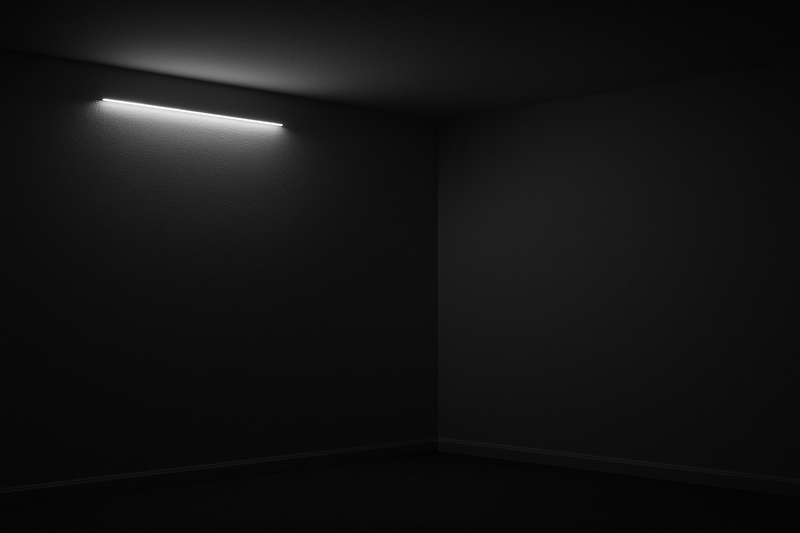
Even as a manufacturer, I know that LED strips are a specific tool, not a universal solution. The best lighting design uses layers. LED strips are champions of the ambient and accent layers, but they are not typically meant to be the main "general" light source. Using them correctly means understanding their strengths and also their limitations. Acknowledging this is key to a successful and well-balanced lighting plan.
Know the Limitations
Using a tool correctly means knowing when to put it down.
- As the Sole Light Source: A room lit only by accent strips can feel like a nightclub or a cave. You still need primary general lighting from sources like downlights, track lights, or pendants to properly illuminate the space for everyday activities.
- In High-Heat Environments: Heat is the number one enemy of an LED’s lifespan. Standard LED strips5 should not be used in very high-temperature locations like saunas, steam rooms, or inside enclosures with other hot equipment unless they are specifically rated for it and installed in a heavy-duty heat-sinking channel.
- Where They Reflect on Glossy Surfaces: Be careful when mounting strips over highly polished surfaces like a granite countertop or a glossy floor. If the strip is too close, you may see a distracting reflection of the individual LED dots. Using a channel with a frosted diffuser can help mitigate this by creating a more uniform line of light.
| Lighting Layer | Function | Common Fixture |
|---|---|---|
| Ambient | Provides overall, general illumination. | Downlights, Cove Lights (Strips) |
| Task | Focused light for specific activities. | Under-cabinet (Strips), Lamps |
| Accent | Highlights specific features or objects. | Picture Lights, Shelf Lights (Strips) |
Do LED Strips Use a Lot of Electricity?
Your client loves the idea of adding extensive cove and accent lighting, but they are concerned that having lights on everywhere will lead to a huge electricity bill.
No, LED strips are incredibly energy-efficient. A full 5-meter (16.4 ft) roll of a common LED strip uses less electricity than a single, old-fashioned 60-watt incandescent light bulb. Their low power consumption makes them an affordable way to add high-end lighting.
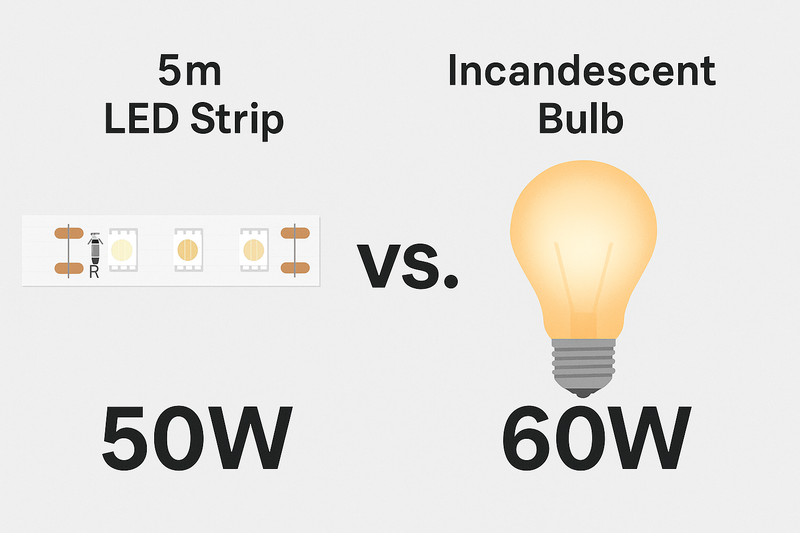
This is one of the easiest concerns to address because the numbers are so impressive. The technology behind LEDs is designed for efficiency, converting a very high percentage of electricity directly into light, instead of wasting it as heat like old bulbs did. This means you can create dramatic, wall-washing lighting effects for a fraction of the running cost of traditional lighting technologies. It’s luxury lighting without the luxury energy bill.
The Efficiency Advantage
Let’s look at the actual numbers to see how little power a typical installation uses.
- Wattage per Meter6: LED strips are measured in watts per meter (or foot). A common brightness for accent lighting might be around 10 watts per meter. So, a 5-meter run would consume 50 watts in total.
- The Comparison: A single incandescent bulb that produces a similar amount of light might consume 60-75 watts. A halogen bulb would be similar. So you are lighting an entire 16-foot cove for less power than one old tabletop lamp.
- Low Voltage Safety7: This efficiency is also tied to safety. Because they require so little power, the strips run on safe, low-voltage DC power (typically 24V). This is much safer to install and work with than the high-voltage AC power that traditional fixtures use.
| Light Source | Typical Power Use (for similar brightness) | Energy Efficiency |
|---|---|---|
| Incandescent Bulb | 60 Watts | Very Low |
| Halogen Bulb | 50 Watts | Low |
| LED Strip (5 meters) | 40-70 Watts | Very High |
Conclusion
LED strips are a versatile and efficient tool for transforming a home’s atmosphere. Use them indirectly in kitchens, living rooms, and bedrooms to create a layered, professional look without high energy costs.
-
Exploring ambient light can transform your living space, creating a warm and inviting environment that enhances comfort. ↩
-
Understanding task lighting can enhance your home’s functionality and aesthetics, making it a must-read for effective design. ↩
-
Learn about the drawbacks of Direct Lighting and why it may not be the best choice for your home or office. ↩
-
Explore this link to understand how Indirect Lighting can transform your space into a sophisticated and comfortable environment. ↩
-
Explore this link to learn effective ways to utilize LED strips for optimal lighting in various environments. ↩
-
Understanding wattage per meter helps in choosing energy-efficient lighting solutions. ↩
-
Exploring low voltage safety can enhance your knowledge of safe installation practices for lighting. ↩
Related Articles
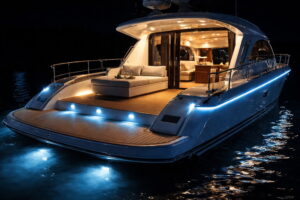
Why Do Most Marine LED Strips Fail After One Season?
You install a beautiful lighting package on a client’s yacht. Three months later, the lights are flickering, the white silicone…
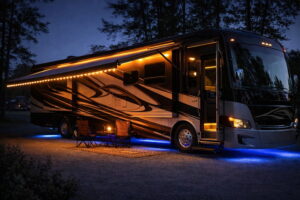
How Do You Choose RV LED Strips That Won’t Peel Off or Flicker on the Highway?
You are upgrading a $100,000 motorhome for a client. They want underglow lighting and awning lights to be the envy…
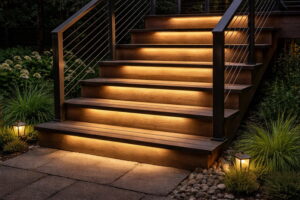
How Can You Light Outdoor Stairs for Maximum Safety Without Blinding the Homeowner?
You have finished a beautiful tiered deck or a stone landscape staircase. The client wants lights. If you do this…
